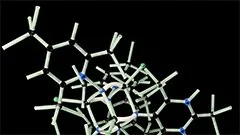Introduction
Bacteria, also known as microbes or germs, are single-celled organisms that are ubiquitous in nature and play crucial roles in various biological processes. This course focuses on the growth of bacteria, a fundamental aspect of microbiology that underpins our understanding of these essential organisms.
Bacterial Cell Structure and Characteristics
Bacteria are prokaryotes, which lack a distinct nucleus and other membrane-bound organelles characteristic of eukaryotic cells. They have a cell wall, cytoplasm, plasma membrane, and genetic material (DNA) that is not enclosed within a nuclear membrane. Bacterial cells can be rod-shaped (bacilli), spherical (cocci), or spiral, depending on their species.
Nutritional Requirements for Bacterial Growth
Bacteria require essential nutrients to grow and reproduce. The three primary nutrients are carbon sources (carbohydrates, proteins, or fats), nitrogen sources (ammonium, nitrate, or organic nitrogen), and energy sources (usually carbohydrates). Some bacteria can also use inorganic compounds such as sulfur, iron, phosphorus, and trace elements for growth.
Fermentation vs. Oxidative Respiration
Bacteria obtain energy through either fermentation or oxidative respiration. Fermentation is an anaerobic process that produces ATP by breaking down carbohydrates in the absence of oxygen. In contrast, oxidative respiration occurs in aerobic conditions, where bacteria use oxygen to oxidize substrates and generate more ATP efficiently.
Factors Affecting Bacterial Growth
Several factors influence bacterial growth, including temperature, pH, moisture, nutrient availability, and the presence of inhibitory substances such as antibiotics or disinfectants. These factors determine whether a particular environment is suitable for bacterial growth and proliferation.
Temperature and pH Ranges
Each bacterium has an optimal temperature range for growth, with most being mesophiles (growing best at temperatures between 20°C and 45°C). Additionally, the optimum pH for bacterial growth varies among species, with some preferring slightly acidic (around pH 6.0) or alkaline conditions (around pH 8.0).
Bacterial Growth Phases
Bacterial growth can be divided into four distinct phases: exponential growth, stationary phase, declining phase, and death phase. Under favorable conditions, bacteria enter the exponential growth phase, during which they rapidly multiply by binary fission.
Exponential Growth Phase
During this phase, bacterial population doubles at a constant rate (logarithmic growth), with the time taken to double being known as the generation time. The exponential growth phase continues until nutrient availability limits cell division, leading to the transition into the stationary phase.
Stationary and Declining Phases
In the stationary phase, bacterial growth slows or stops due to exhaustion of essential nutrients or accumulation of waste products. However, some bacteria can remain in a dormant state for extended periods, entering a survival mode known as the viable but nonculturable (VBNC) state. The declining phase occurs when the number of bacteria begins to decrease, either due to cell death or the transition to a stationary state.
Death Phase
During the death phase, bacterial numbers continue to decline, and eventually, they die off completely. This can be due to various factors such as starvation, antibiotic treatment, or unfavorable environmental conditions.
Bacterial Growth Models
Bacterial growth can be described by mathematical models that help predict population dynamics under different conditions. The most common model is the Monod growth equation, which describes exponential growth based on nutrient availability and maximum growth rate (µ).
In conclusion, understanding bacterial growth is essential for comprehending the roles bacteria play in various environments, as well as for developing strategies to control their populations when necessary. By studying the factors that influence bacterial growth, we can gain insights into how these organisms respond to changes in their environment and adapt to survive under diverse conditions.
MCQ: Test your knowledge!
Do you think you know everything about this course? Don't fall into the traps, train with MCQs! eBiologie has hundreds of questions to help you master this subject.
To go further...
These courses might interest you
Create a free account to receive courses, MCQs, and advice to succeed in your studies!
eBiologie offers several eBooks containing MCQ series (5 booklets available free for each subscriber).







